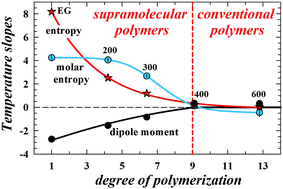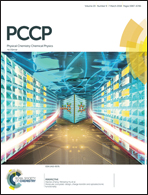From supramolecular to conventional polymers: polyethylene glycol
Abstract
Increasing the polymerization degree of polyethylene glycol (PEG), HO–(CH2CH2O–)nH, entails lowering the number of hydroxyl groups per unit volume; therefore, supramolecular polymers are gradually replaced by longer and longer conventional polymers. This paper concerns an estimation of the polymerization degree (n) where PEG changes its nature from a supramolecular polymer to a conventional polymer. It was found that that virtual transformation takes place when n reaches the value of about 9. The conclusion follows from the different thermal behaviors of the dipolar orientational effects in liquid PEG detected for n below and above 9. The result reflects a diametrically different impact of the temperature on the linkages between the monomers in supramolecular and conventional polymers.



 Please wait while we load your content...
Please wait while we load your content...